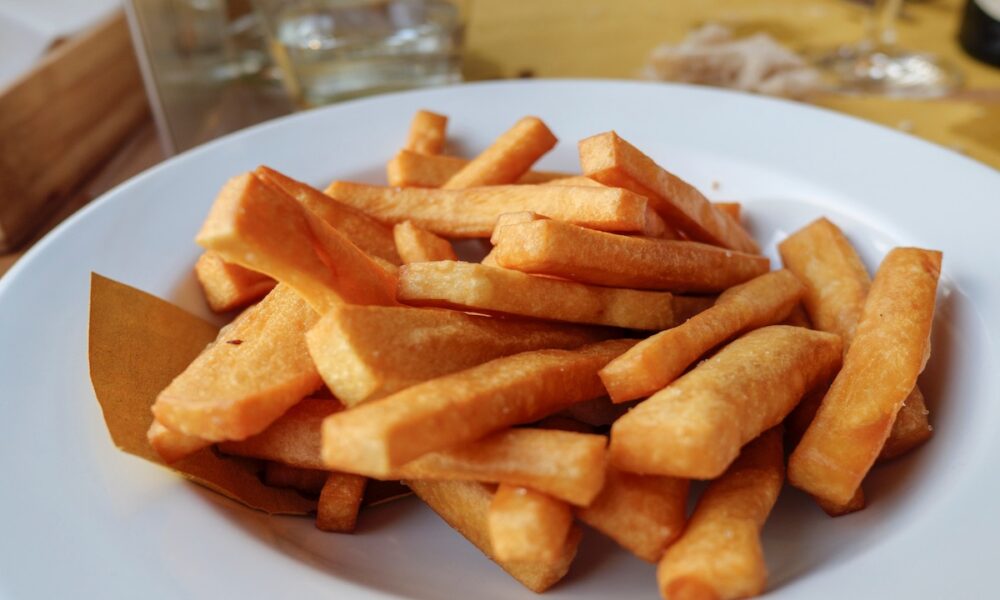Recipes
Genoese panissa

Let's find out how to prepare Genoese panissa and all the ways to serve it, from the most classic variant in a sandwich to the delicious fried one.
Today we are going to discover a typical recipe from Liguria which shares the ingredients with the much better known farinata. We are talking about the Genoese panissa, a dish little known outside the borders of the region but which is experiencing a return to splendor thanks to the trend of street food .
Prepared with chickpea flour and water , Ligurian panissa can be consumed in different ways: freshly made, once cold or fried. The first stages of the procedure are all the same and we could almost say that each recipe is the evolution of the previous one . Let's discover all the secrets to making this simple dish but rich in flavours.
How to prepare the Genoese panissa recipe
- In a pan (ideally copper) sift the chickpea flour and add the salt . Mix everything quickly.
- Pour in the water , stirring with a whisk to prevent lumps from forming. If you have time, we recommend letting the batter rest for at least 6 hours, stirring occasionally. This way it will be more digestible.
- Transfer the pan to the heat and cook for an hour and a half, stirring often because it tends to stick to the bottom.
- Once ready, pour it into a baking tray lined with cling film, level it and leave it to cool for an hour at room temperature and an hour in the fridge.
How to enjoy panissa
There are several ways to serve Genoese panissa:
- freshly made, when it is still hot and resembles polenta , distribute it on plates and season it with pepper, quality extra virgin olive oil and a splash of lemon juice. In this case we recommend reducing the quantity of flour to 275 grams.
- once cold, simply cut into slices and put in a sandwich. If you can get hold of the typical, very thin unleavened bread, you can prepare the deep-fried fugassette . Alternatively accompanied with oil, sliced spring onion, salt and pepper.
- fried in boiling seed oil until golden and crunchy, sliced to obtain a product similar to panelle , or diced for delicious panissette . We leave you a video of this version with all the steps.
- sautéed in a pan with a base of onion.
Panissa is also a typical dish of Carloforte cuisine . On the island it is prepared al verde , i.e. browned in a pan with onion and parsley; fried ; acumudò, that is, cooked with tomato sauce just as if it were polenta.
Conservation
The panissa will keep well covered in cling film in the fridge for 2-3 days .
Origin and history
The term panissa derives, as also happens with the Piedmontese panissa , from a cereal similar to millet which is no longer cultivated, panicum. To discover the origins of the dish, however, we must extricate ourselves from a narrative that oscillates between history and legend . We are in 1200 and the Genoese sailing ships were returning from the Battle of Meloria with a load of chickpeas. However, they were hit by a cannon shot which shattered their supplies. The flour mixed with the salt water giving rise to a batter, according to the sailors, inedible. It was abandoned under the sun until the following day, transforming into the primordial version of farinata .
At home the recipe was revisited becoming the one we know today. Panissa differs from farinata not only in its cooking (farinata is cooked in the oven) but also in the absence of oil in the dough. The first written traces of panissa, even in the fried and pan-fried version, can be found in the Vera Cuciniera Genovese , a cooking manual dating back to the mid-1800s.
In the 1930s it was the workers ' food par excellence, cooked by men for men. However, it was also prepared in historic places known as sciamadde . Today, Genoese panissa is a traditional agri-food product of the Liguria region.
Riproduzione riservata © - WT